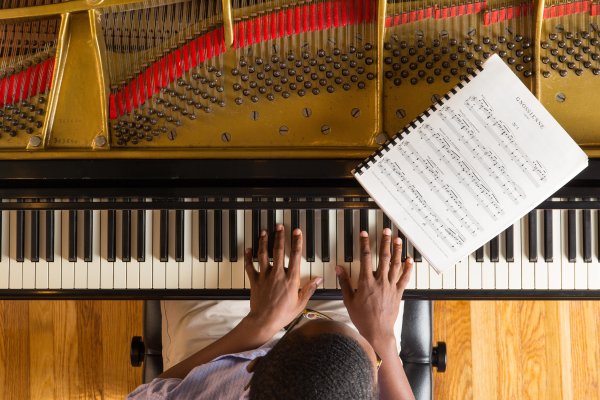Minimum Standards
Valparaiso University’s music department introduces music theory early in the curriculum, and students will already need to be fluent in basic music rudiments before being allowed to enroll in MUS 163, Music Theory I.
Incoming students should already be able to:
- Read and write pitch notation fluently in treble and bass clefs,
- Understand the use of meter signatures and read basic rhythmic notation,
- Locate specific notes on a keyboard and know the difference between half steps and whole steps both on the keyboard and in notation, and
- Identify and write key signatures for the major keys.
Many high school musicians already have complete mastery of these rudiments. Others may not have had an opportunity yet to focus on this information. Students will be given a placement exam during their auditions and may take a diagnostic re-test in the fall if necessary. Attaining these skills is required to register for MUS 163 and for students to go on to succeed in the core theory sequence.
Concentrate on achieving fluency. It is not enough to be able to “figure out” the answer; you should know it automatically.
Resources for success
If you are unfamiliar with these terms and exercises, we urge you to consult first with a music teacher or director at your school or church for some guidance in getting started. There are many basic music rudiments books for sale in music stores, but many are expensive. These exercises can usually be mastered without the purchase of special books.
In addition, there are many useful websites that provide free instruction and drill on aspects of music fundamentals. You can develop your skills with tutorials and drills at the following recommended sites:
- Ricci Adams’ Musictheory.net (musictheory.net)
- Teoria Music Theory Web (teoria.com)
- Dolmetsch Online (more advanced theory) (dolmetsch.com/introduction.htm)
Helpful Skills
Students who can meet the minimum standards may choose to practice more advanced skills before beginning MUS 163. They can concentrate on learning to:
- spell the major scales in music notation using notes and accidentals
- spell and identify musical intervals
- spell and identify major, minor, diminished, and augmented triads
